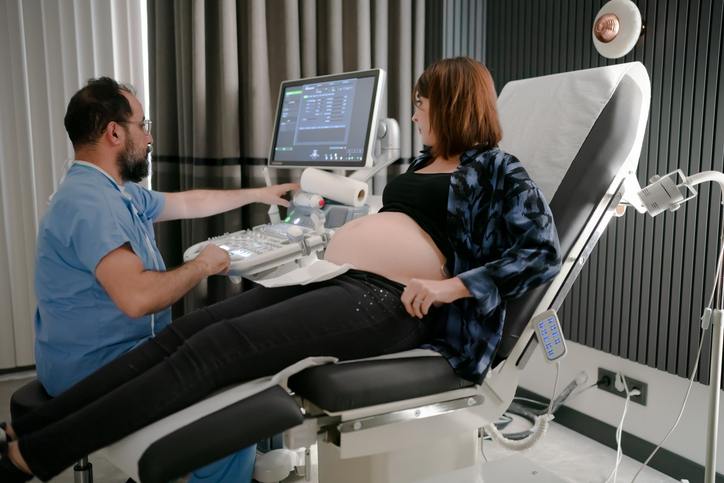When my child was diagnosed with hemolytic disease of the fetus and newborn (HDFN) during pregnancy, my world was turned upside down. I had already known this pregnancy would be different, high-risk and medically complex, but I hadn’t anticipated the intense emotional rollercoaster I would ride every single week.
From 13 weeks on, I began having weekly visits with a maternal fetal medicine specialist. These appointments became both my lifeline and a source of anxiety. Each visit carried the weight of “what if,” and every ultrasound became a window into my baby’s fragile fight for life.
During these visits, the ultrasound machine was our most powerful tool. It was how we kept watch, not just over her growth, but over her survival. The technician would carefully and methodically take images of my daughter. I remember staring at the screen, breath held, hoping to see her wiggle or stretch, anything to reassure me she was still okay. Usually, seeing that strong heartbeat gave me the reassurance that I needed.
Learn more about HDFN treatment and care
Every scan included a biophysical profile (BPP)–a detailed assessment of her breathing movements, muscle tone, movement and amniotic fluid levels. I learned to live by those numbers, and the scores dictated my level of peace until the next visit. I’d feel a brief wave of relief if she scored well, followed almost instantly by the pressure of making it through another seven days.
One of the most crucial parts of our monitoring was the middle cerebral artery (MCA) Doppler ultrasound. This non-invasive ultrasound measured the velocity of blood flow in her brain and gave us insight into whether she was becoming anemic, a key concern with HDFN. I learned terms I never thought I’d need to know, like “MoM,” “peak systolic velocity” and “intrauterine transfusion thresholds.” Each measurement brought hope or fear. When the number was within the safe range, I could breathe. When it crept higher, panic would settle in my chest like a weight.
There was no room to relax, not even for a moment. Movement counting became part of my daily ritual. I would lie still and concentrate, hoping to feel those tiny kicks. If they slowed or felt weaker, I spiraled into fear. Was she becoming too anemic? The anxiety never left me, it just softened or sharpened depending on the data of the day.
The journey was isolating at times. Few people understood the dread that came with every test, or the heartbreak of preparing yourself mentally for interventions like intrauterine transfusions. But through it all, I found a deep strength I didn’t know I had, a fierce love and protectiveness that pushed me to advocate, research, ask hard questions and show up to every single appointment with hope, even when it felt impossible.
Looking back, those weekly ultrasounds weren’t just medical procedures–they were milestones. They were the chapters of my daughter’s survival story. Each scan, each Doppler, each tiny movement was a silent victory. And when she was finally placed in my arms, I knew every moment of worry, every tear and every decision had led us there.
Sign up here to get the latest news, perspectives, and information about HDFN sent directly to your inbox. Registration is free and only takes a minute.


